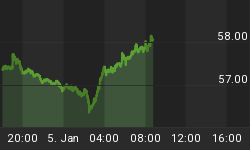The lack of fresh economic news kept the Forex markets in check most of the day but the U.S. Dollar did post a gain against most majors. The gains and losses were split between relatively lower yielding European currencies and the higher yielding Pacific Rim currencies.
The EUR USD started the day slightly better led by the performance in European equity markets but turned negative throughout the U.S. session. Fed Chairman Bernanke's upbeat comments on Friday seemed to have worn off with traders instead choosing to focus on the more subdued comments by European Central Bank President Trichet. Thoughts that the U.S. economy was recovering faster than the Euro Zone may have also weighed on the Euro.
Traders continued to press the GBP USD lower in a move that began August 6th when the Bank of England announced an increase in the funding for its asset-buyback program. This announcement is being perceived as bearish because it is basically a license to print money. Furthermore, the prospect of a huge budget deficit is also being seen as a major negative.
The Dollar gained back some ground versus the Swiss Franc. Last week the USD CHF was under pressure after the Swiss National Bank decided to sell its interest in UBS after the banking giant reached an agreement with the U.S. Internal Revenue Service. This news sent a signal that the Swiss banking system had stabilized.
The USD JPY posted a gain for the day on the strength in U.S. equity markets and the thought of a U.S. economic recovery. The quick rise in the stock market the past few days renewed interest in the carry trade. Bernanke's comment that the U.S. may be on the road to recovery put additional pressure on the Yen as the Japanese economy is expected to continue to flounder.
The USD CAD fell as Canadian Dollar bulls turned optimistic about the economy after a much better than expected Canadian retail sales report. The recent gains in the Canadian Dollar have just about all of its earlier losses for the month.
The Dollar lost ground to the higher yielding Australian and New Zealand Dollars. The AUD USD and NZD USD gained as demand for higher yields remained high with the recent surge in equity markets. Gains were limited as these two markets approached their highs for the year. There was also selling pressure into the close as both the Aussie and Kiwi weakened along with equity markets.















